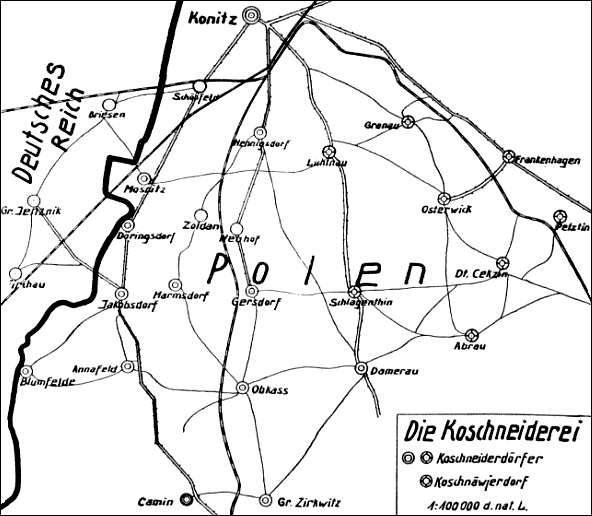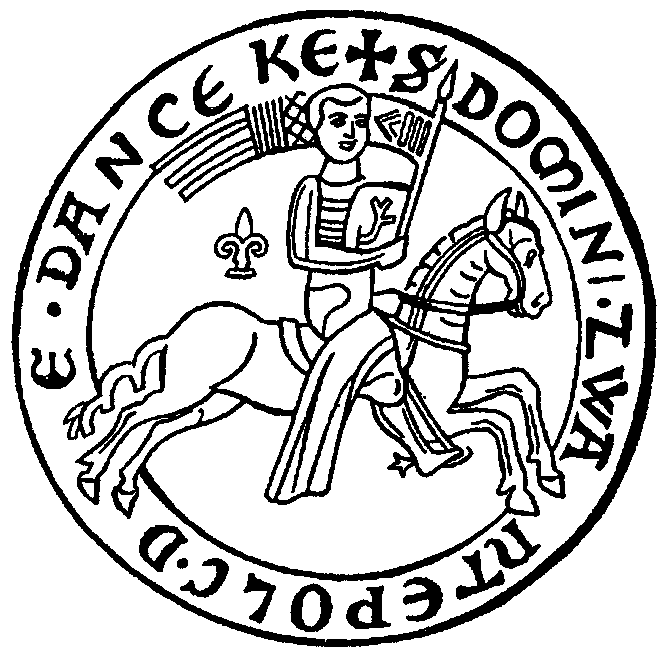|
Chojnice
Chojnice (; , or ''Chòjnice''; german: Konitz or ''Conitz'') is a town in northern Poland with 39,423 inhabitants as of December 2021, near the Tuchola Forest. It is the capital of the Chojnice County in the Pomeranian Voivodeship. History Piast Poland Chojnice was founded around 1205 (although the date is considered to be estimate) in Gdańsk Pomerania (Pomeralia), a duchy ruled at the time by the Samborides, who had originally been appointed governors of the province by Bolesław III Wrymouth of Poland. Gdańsk Pomerania had been part of Poland since the 10th century, with few episodes of autonomy, yet under Swietopelk II, who came into power in 1217, it gained independence in 1227. The duchy extended roughly from the river Vistula in the east, to the rivers Łeba or Grabowa in the west, and from the rivers Noteć and Brda in the south-west and south, to the Baltic Sea in the north. By 1282 the duchy had returned to Poland. The town's name is Polish in origin and comes ... [...More Info...] [...Related Items...] OR: [Wikipedia] [Google] [Baidu] |
Chojnice County
__NOTOC__ Chojnice County ( csb, Chòniczzi kréz, pl, powiat chojnicki) is a unit of territorial administration and local government (powiat) in Pomeranian Voivodeship, northern Poland. It came into being on January 1, 1999, as a result of the Polish local government reforms passed in 1998. Its administrative seat and largest town is Chojnice, which lies south-west of the regional capital Gdańsk. The county also contains the towns of Czersk, lying east of Chojnice, and Brusy, north-east of Chojnice. The county covers an area of . As of 2019 its total population is 97,616, out of which the population of Chojnice is 39,890, that of Czersk is 9,910, that of Brusy is 5,188, and the rural population is 42,628. ''Chojnice County on a map of the counties of Pomeranian Voivodeship'' Chojnice County is bordered by Bytów County and Kościerzyna County to the north, Starogard County and Tuchola County to the east, Sępólno County to the south, and Człuchów County to the west. ... [...More Info...] [...Related Items...] OR: [Wikipedia] [Google] [Baidu] |
Pomeranian Voivodeship
Pomeranian Voivodeship, Pomorskie Region, or Pomerania Province (Polish: ''Województwo pomorskie'' ; ( Kashubian: ''Pòmòrsczé wòjewództwò'' ), is a voivodeship, or province, in northwestern Poland. The provincial capital is Gdańsk. The voivodeship was established on January 1, 1999, out of the former voivodeships of Gdańsk, Elbląg and Słupsk, pursuant to the Polish local government reforms adopted in 1997. It is bordered by West Pomeranian Voivodeship to the west, Greater Poland and Kuyavian-Pomeranian Voivodeships to the south, Warmian-Masurian Voivodeship to the east, and the Baltic Sea to the north. It also shares a short land border with Russia (Kaliningrad Oblast), on the Vistula Spit. The voivodeship comprises most of Pomerelia (the easternmost part of historical Pomerania), as well as an area east of the Vistula River. The western part of the province, around Słupsk, belonged historically to Farther Pomerania. The central parts of the province belong to Pomer ... [...More Info...] [...Related Items...] OR: [Wikipedia] [Google] [Baidu] |
Voivodeship Road
According to classes and categories of public roads in Poland, a voivodeship road ( pl, droga wojewódzka) is a category of roads one step below national roads in importance. The roads are numbered from 100 to 993. Total length of voivodeship roads in Poland is of which are unpaved (2008).Transport – activity results in 2008 , List of voivodeship roads Current list of voivodeship roads has been established with regulation of General Director of National Roads and Motorways from 2 December 2008[...More Info...] [...Related Items...] OR: [Wikipedia] [Google] [Baidu] |
Tuchola Forest
The Tuchola Forest, also known as Tuchola Pinewoods or Tuchola Conifer Woods, (the latter a literal translation of pl, Bory Tucholskie; csb, Tëchòlsczé Bòrë; german: Tuchler or Tucheler Heide) is a large forest complex near the town of Tuchola in northern Poland, which lies between the Brda and Wda Rivers, within the Gdańsk Pomerania region. The largest towns in the area are Czersk and Tuchola. The designation may also refer to the eponymous historical land and ethnocultural region, World War II battle, geomorphological mesoregion, phytogeographic landscape region and syntaxonomical subregion, nature and forest mesoregion, promotional forest complex, Biosphere Reserve, Natura 2000 Special Protection Area, national park, LEADER/CLLD local action group, or a number of local associations. Geographical extent varies greatly among these units or entities. Geography, nature and ecology With 3,200 km² of dense spruce and pine forest, the area is one of the biggest forests in ... [...More Info...] [...Related Items...] OR: [Wikipedia] [Google] [Baidu] |
Polish Car Number Plates
Vehicle registration plates of Poland indicate the region of registration of the vehicle given the number plate. According to Polish law, the registration plate is tied to the vehicle, not the owner. There is no possibility for the owner to keep the licence number for use on a different car, even if it's a cherished registration. The licence plates are issued by the powiat (county) of the vehicle owner's registered address of residence, in the case of a natural person. If it is owned by a legal person, the place of registration is determined by his/her address. Vehicles leased under operating leases and many de facto finance leases will be registered at the address of the lessor. When a vehicle changes hands, the new owner must apply for new vehicle registration document bearing his or her name and registered address. The new owner may obtain a new licence plate although it is not necessary when the new owner's residence address is in the same district as the previous owner's. In ... [...More Info...] [...Related Items...] OR: [Wikipedia] [Google] [Baidu] |
National Roads In Poland
According to classes and categories of public roads in Poland, a national road ( pl, Droga krajowa) is a public trunk road controlled by the Polish central government authority, the General Directorship of National Roads and Motorways ( pl, Generalna Dyrekcja Dróg Krajowych i Autostrad). Other types of roads in Poland are under the control of entities at voivodeship, powiat and gmina levels: voivodeship roads, powiat roads and gmina roads. National roads network National roads include: * motorways and expressways and other roads that are planned to be upgraded to motorways or expressways * International E-road network * roads connecting the national road network * roads to or from border crossings * roads which are alternatives to toll roads * beltways of major cities and metropolitan areas * roads of military importance Currently there are 96 national roads in Poland (1–68, 70–97). Since 1 January 2014, there are new national roads: 89, 95, 96 and 97. In 2011 th ... [...More Info...] [...Related Items...] OR: [Wikipedia] [Google] [Baidu] |
Gdańsk Pomerania
Gdańsk Pomerania ( pl, Pomorze Gdańskie), csb, Gduńsczim Pòmòrzã, german: Danziger Pommern) is a geographical region within Pomerelia in northern and northwestern Poland, covering the bulk of Pomeranian Voivodeship. It forms a part and the bulk of Pomerelia, also known as Vistula Pomerania, Eastern Pomerania, and previously Polish Pomerania; however, in contrast to the latter terms, it does not cover the historical areas of Chełmno Land and Michałów Land, sometimes with the addition of Lubawa Land. It has traditionally been divided into Kashubia, Kociewie and Tuchola Forest regions. The Lauenburg and Bütow Land is considered by the Polish historiography a part of Kashubia (and thus Gdansk Pomerania), while German historiography tends to treat it as a part of Farther Pomerania. Gdansk Pomerania has been inhabited by ethnic Kashubians, Kociewians and Borowians, respectively. Name In Polish language, the area was called ('Pomerania') since the Middle Ages. In the ear ... [...More Info...] [...Related Items...] OR: [Wikipedia] [Google] [Baidu] |
Grabowa (river)
Grabowa (german: Grabow) is a river in the Pomerania region of northern Poland, 75 kilometers long. Its source is Lake Wockmin near Sławno (''Schlawe''), from where it flows to Darłowo (''Rügenwalde'') before it flows into the Wieprza (''Wipper'') river just a few kilometers before the Wieprza reaches the Baltic Sea The Baltic Sea is an arm of the Atlantic Ocean that is enclosed by Denmark, Estonia, Finland, Germany, Latvia, Lithuania, Poland, Russia, Sweden and the North and Central European Plain. The sea stretches from 53°N to 66°N latitude and .... Near Jeźyce (''Altenhagen''), Grabowa forks with one arm flowing into Lake Buckow (''Jezioro Bukowo, Buckowsee''). Rivers of Poland Rivers of West Pomeranian Voivodeship {{Poland-river-stub ... [...More Info...] [...Related Items...] OR: [Wikipedia] [Google] [Baidu] |
Swietopelk II
Swietopelk II, also Zwantepolc II or Swantopolk II, (1190/1200 – 11 January 1266), sometimes known as the Great ( pl, Świętopełk II Wielki; Kashubian: ''Swiãtopôłk II Wiôldżi''), was the ruling Duke of Pomerelia-Gdańsk from 1215 until his death. He was the first member of the Samborides to style himself ''dux'' from 1227 onwards.Loew PO: Danzig. Biographie einer Stadt, Munich 2011, p. 32: "Sambor ..styled himself 'princeps Pomoranorum,' .. but not 'dux,' which was the privilege of the Piasts." p. 33: "After Sambor's death ..his brother Mestwin ..strove after gaining ever greater independence from Poland. He confidently styled himself 'princeps in Danzk' and expanded southwards. His oldest son Swantopolk (Swietopelk), ruling from 1217 onwards, exploited Poland's fragmentation to acquire independence for his realm; already since 1227 he styled himself 'dux,' 'Duke of Pomerelia.'" Names The duke is known under many spellings (''Swantepolk, Swantipolk, Svatopluk, S ... [...More Info...] [...Related Items...] OR: [Wikipedia] [Google] [Baidu] |
Vistula
The Vistula (; pl, Wisła, ) is the longest river in Poland and the ninth-longest river in Europe, at in length. The drainage basin, reaching into three other nations, covers , of which is in Poland. The Vistula rises at Barania Góra in the south of Poland, above sea level in the Silesian Beskids (western part of Carpathian Mountains), where it begins with the Little White Vistula (''Biała Wisełka'') and the Black Little Vistula (''Czarna Wisełka''). It flows through Poland's largest cities, including Kraków, Sandomierz, Warsaw, Płock, Włocławek, Toruń, Bydgoszcz, Świecie, Grudziądz, Tczew and Gdańsk. It empties into the Vistula Lagoon (''Zalew Wiślany'') or directly into the Gdańsk Bay of the Baltic Sea with a delta of six main branches (Leniwka, Przekop, Śmiała Wisła, Martwa Wisła, Nogat and Szkarpawa). The river is often associated with Polish culture, history and national identity. It is the country's most important waterway and natural symbol, a ... [...More Info...] [...Related Items...] OR: [Wikipedia] [Google] [Baidu] |
Łeba (river)
The Łeba (), a river in Middle Pomerania (Poland), originates near the village of Borzestowo west of Kartuzy, passes through Łebsko Lake and empties into the Baltic Sea. It is 117 km long with a basin area of 1,801 km². The town of Lębork lies on the river Łeba, while the town of Łeba on the Baltic coast was originally located west of the present-day mouth of the river. In the 12th century the lower Łeba marked the eastern border of the Land of Słupsk-Sławno, ruled by the Pomeranian (Griffin) duke Ratibor I and his descendants, while the territory around the castellany of Białogarda was a possession of the Pomerelian duke Sobieslaw I of the Samborides dynasty. After Poland regained Pomerelia in 1294, the Łeba formed the boundary between the Polish part of Pomerania and the Duchy of Pomerania. From 1308, after the Teutonic takeover of Danzig (Gdańsk) and the Treaty of Soldin (Myślibórz), the river formed the western border of the Order's Pomerelian lan ... [...More Info...] [...Related Items...] OR: [Wikipedia] [Google] [Baidu] |
Brda (river)
The Brda (; german: Brahe) is a river in northern Poland, a tributary of the Vistula. It has a total length of 245 km and a catchment area (all within Poland) of 4,665 km2. , p. 85-86 Navigation The Brda is part of the Odra- waterway, connecting these two river ...[...More Info...] [...Related Items...] OR: [Wikipedia] [Google] [Baidu] |

.jpg)


